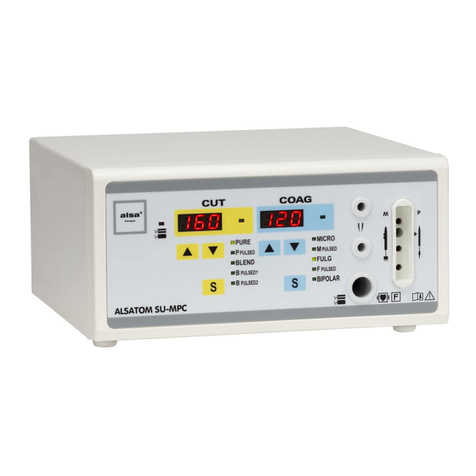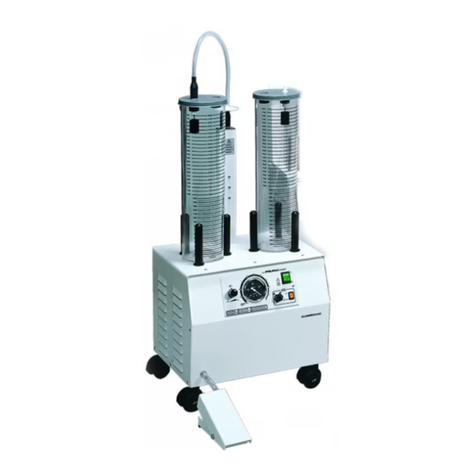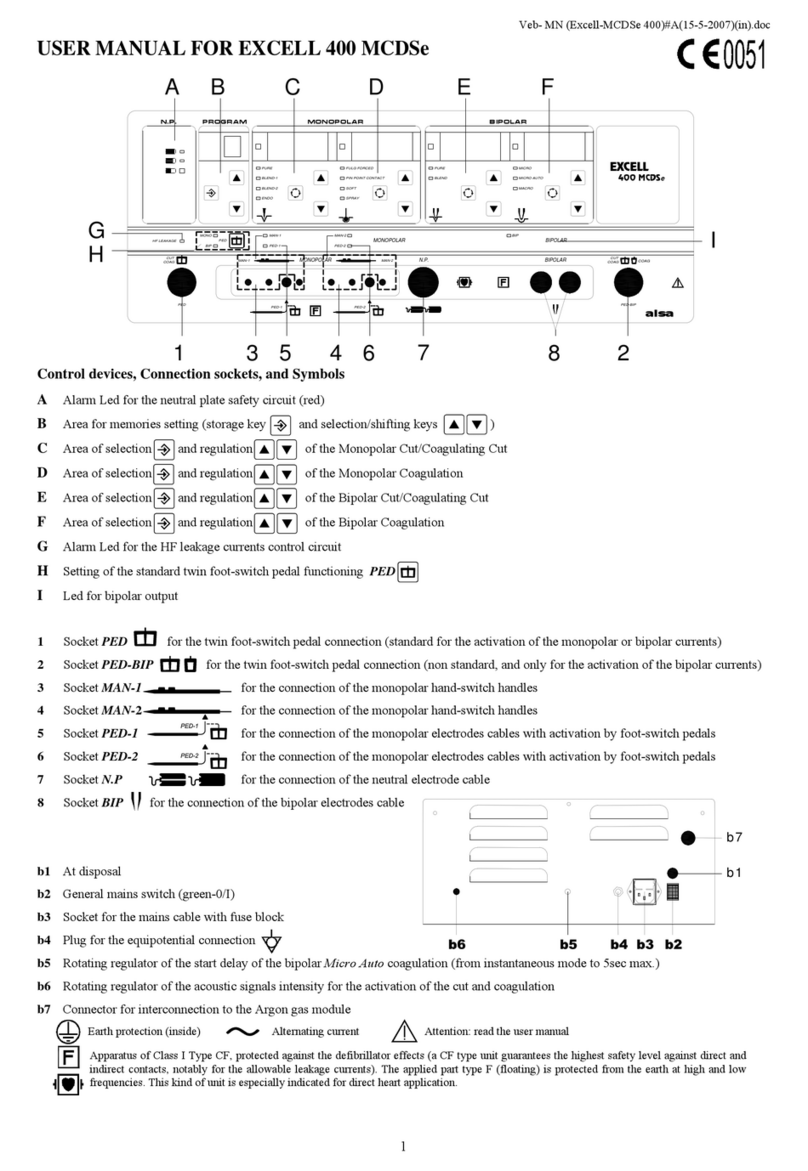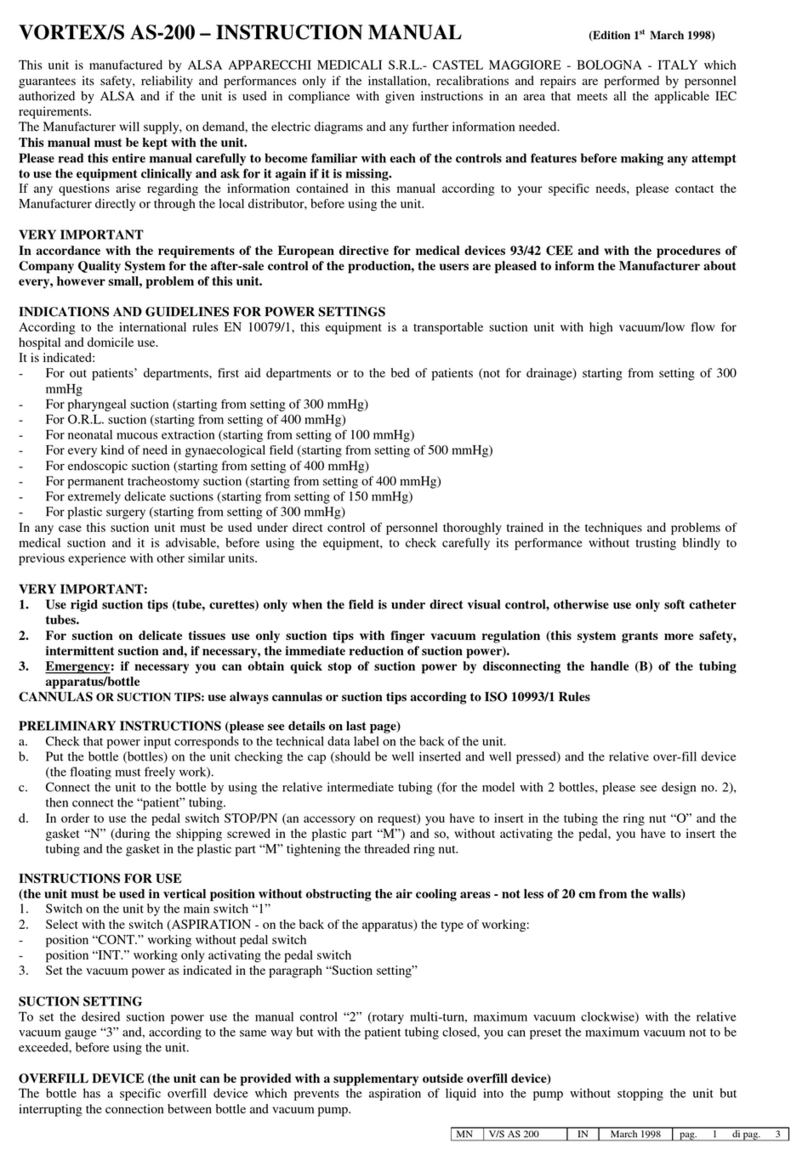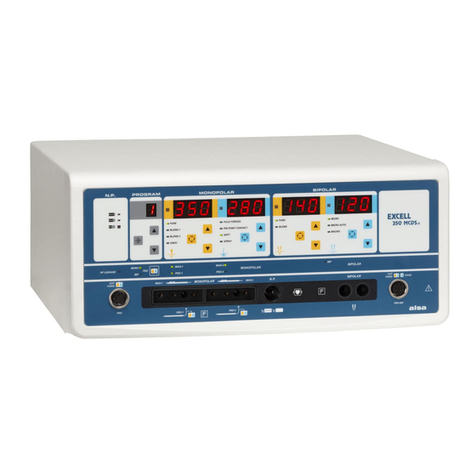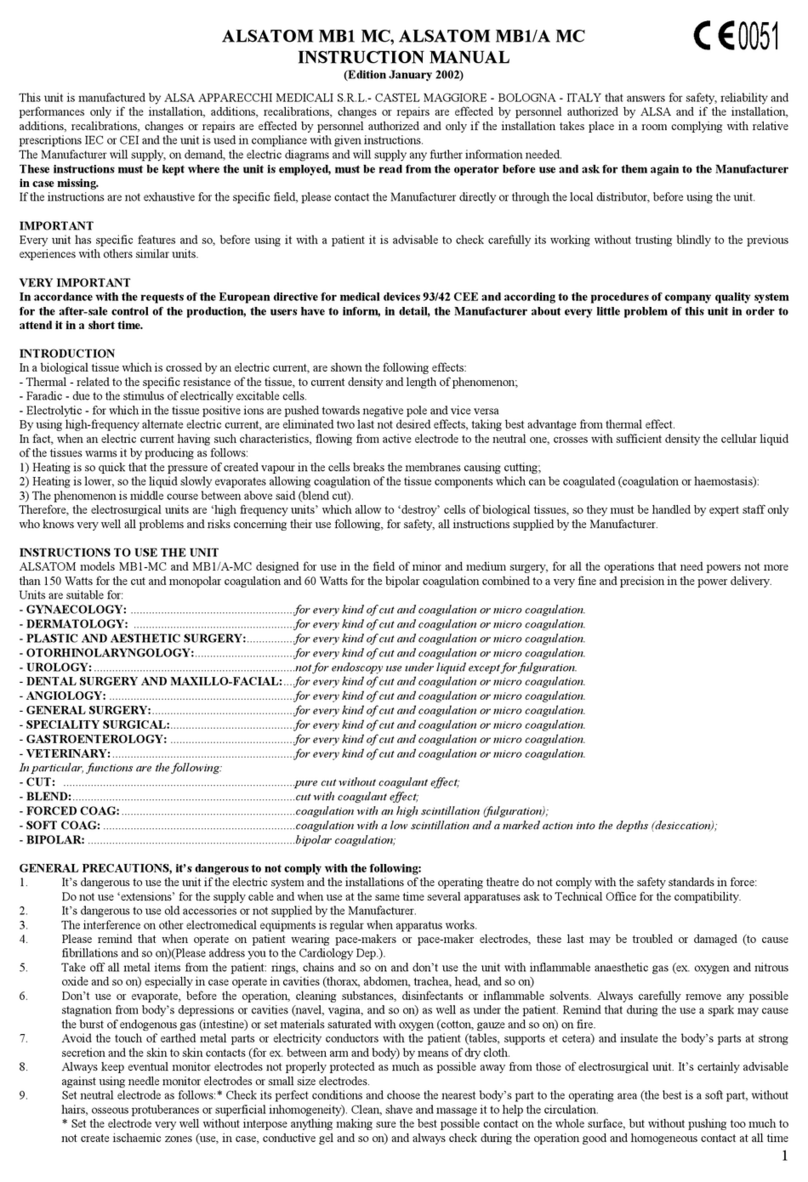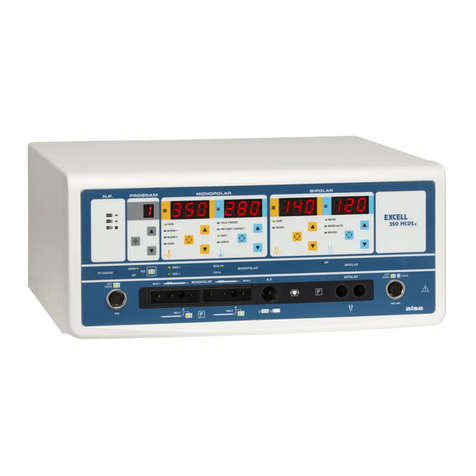
UM_AlsSUMPC(50_100_140)_EN_1.0_11-17.docx 2 / 14
IMPORTANT WARNINGS
Following warnings are vital to use these devices in the best and safest possible way.
Some warnings are inserted for information completeness even if they refer only to devices for major surgery.
General Information -----------------------------------------------------------------------------------------------------------------------
Never use the unit if the installations of the place of use do not comply with the current safety standards. Do not use extensions for
the mains cord, when connecting many devices at the same time, ask the Technical Service about their compatibility.
The smoke produced during the use of HF units is biologically noxious. In many countries, the Official Bodies who safeguard the health
of patients and operators recommend the use of Smoke evacuators to evacuate and filter it.
The use of a suitable smoke evacuator is very useful during the laparoscopy since it allows the best vision of the operating area without
reducing the pressure inside the cavity.
When using an HF unit for endoscopic procedures under liquid, monitor the quantity of irrigation fluids in the patient (input and output
volumes), mainly if it has a poor renal function or cardiovascular insufficiency.
Flammable substances or explosive gases ---------------------------------------------------------------------------------
All HF units produce during the power delivery small sparks able to fire and explode endogenous gases (I.E. Inside the intestine),
flammable gases (i.e. oxygen, nitrogen protoxide) or materials (cotton, gauze, sheets) saturated by these gases and fire flammable
products (cleaning products, disinfectants or solvents) or materials (cotton, gauze, sheets) soaked by these products.
Standards require the complete evaporation of flammable products before starting the use of a HF unit.
Prudentially never use a HF unit in presence of all above gases/substances.
EMC- Electro-magnetic compatibility (Interferences, Disturbs) --------------------------------------------------
This HF devices complies with all international EMC standards and competent technical bodies have tested it by considering itsuse
environment (OT, similar places). Nevertheless and mainly during the power delivery, it can affect the functioning of following devices:
Planted pacemakers or neuromuscular stimulators/similar devices (i.e. they can cause fibrillations).
Ask for a qualified advice (i.e. From the Cardiology Division before operating a patient holder the pace-maker)
The bipolar mode is the best solution to operate a patient holder these devices.
Other medical equipment used together the HF device (i.e. monitoring devices, video cameras and so on).
If possible, do not use the HF unit stacked with / adjacent to other equipment (Otherwise, check their proper functioning) and portable
communication devices at a distance of less 1 meter from it.
The use of not original accessories (i.e. cables with different lengths) can cause EMC problems...
Preparation of the patient for the operation and use of the monopolar neutral electrode----------
Always place the patient properly for the operation, mainly if it is long since the risk of burns and decubitus lesion rises in this case.
HF currents, mainly monopolar ones, can cause unexpected burns if produce too high thermal effects both in crossed tissues and where
users place the neutral electrode. To reduce this risk do the following:
Take all the metallic objects off the patient (rings, etc.) and remember that the metallic parts (prosthesis, catheters, etc.) on the path of
the current may cause increases of density of current.
Check that the insulating parts of the operating table are good (Not able to cause a contact with a metallic part)
With dry sheets or suitable materials, insulate the patient from any metallic part connected to earth or able to conduct electricity (table,
supports). In the same way, insulate both the patient from the heating mattress and the strongly secreting parts of the body (Sweat can
affect the insulation!) or the contacts skin-to-skin (i.e. between arms and body).
During the operation, verify if the initial insulation remains good mainly when moving the patient or pouring liquids,
When disinfecting the operating field, do not wet both the neutral electrode / the related area and the sheets under or around the
patient. Dry the traces of disinfectant on the skin also.
Place all the not specifically protected monitoring electrodes as far away as possible from the electrodes of the HF unit. Avoid, if possible,
the use of needle type or very small monitoring electrodes.
Check the neutral electrode if it is a reusable type (if worn/old they are extremely dangerous) and place it as close as possible to the
intervention point (the ideal is a soft part without hairs, protuberant bones or superficial differences), but which not get wet when
preparing or disinfecting the operating field. Clean this area, shave and massage it to improve the circulation.
Normally, the better points are the calf and the thigh, but only if the operation does not affect these areas!.
If possible by considering all operation problems, avoid a current flow crossing the body /heart diagonally
Fix the electrode with the best possible contact, without placing anything in between, but do not press it too much to avoid ischemic
zones. Avoid anomalous contacts with conductive parts and insulate arms, hands and fingers from the neutral electrode.
Check that the contact remains constant during the operation, mainly when moving the patient or pouring liquids.
Use “Split” neutral electrodes since they allow the check of the contact with the tissue and fix them with the same distance between both
parts and the operation area. (i.e. for an abdominal operation, place the electrode lengthwise on the leg if it is on the thigh).
Contact the Technical Service to choose the best “disposable” neutral electrode according to specific surgical needs and use it only once in
accordance with its instructions. When the device is able to deliver 400W, the right dimensions are approximately 136 cm2 for patients
with body weight higher than 15 Kg and 84cm2 for children with body weight from 5 to 15 Kg.
Do not rely on the only adhesiveness of disposable neutral electrodes. A supplementary fixing guarantees a more reliability (i.e. an elastic
bandage, able to cover the entire electrode, but without pressing it too much).
Use of all the active electrodes, pencils and instruments ---------------------------------------------------------
The standard monopolar pencils of the company are suitable to connect active electrodes with stems having a diameter of 2, 3 mm.
Never use accessories not compliant with all applicable Standards, not well insulated, not suitable for the following working voltages:
(About 4500/5000 Vpp. “2250/2500 Vp” for the monopolar currents) (About 400/450 Vpp “200/225 Vp” for the bipolar currents) and
worn or damaged. Damaged accessories do not work properly and can lead users to increase the output power at dangerous levels.
When starting the operation, check the status and the insulation of accessories and place all unused active accessories/cables on
insulating materials during the operation. In addition, avoid their contact both with the patient and with other cables or conductive parts.
To avoid not useful carbonizations of tissues, do not activate the power delivery if the electrode does not touch the tissues.






